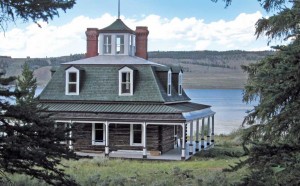By Christian M. Lyons
On Feb. 19, 2015, President Barack Obama designated 21,586 acres of pristine canyons, rivers and backcountry forest in Colorado as the Browns Canyon National Monument.
“Conservation is a truly American idea,” the president said. “The naturalists and industrialists and politicians who dreamt up our system of public lands and waters did so in the hope that, by keeping these places, these special places in trust – places of incomparable beauty, places where our history was written – then future generations would value those places the same way as we did. It would teach us about ourselves, and keep us grounded and keep us connected to what it means to be American. And it’s one of our responsibilities, as Americans, to protect this inheritance and to strengthen it for the future.”
The president designated the monument using the Antiquities Act of 1906, which grants the president authority to designate national monuments in order to protect “objects of historic or scientific interest.” While most national monuments are established by the president, Congress has also established national monuments to protect natural and historic features.
On July 17, Browns Canyon will officially become a National Monument, right here in our backyard. In a ceremony that will include U.S. Secretary of the Interior Sally Jewell, Gov. John Hickenlooper, Sen. Michael Bennet, former Sen. Mark Udall and other state and federal officials, who will formalize Obama’s decree, the canyon will become part of history.
Stretched between the communities of Buena Vista and Salida in Chaffee County, Browns Canyon elevation ranges from 7,300 to 10,000 feet, offering a backdrop for and stunning views of the Arkansas Valley and the Sawatch Range of the Rocky Mountains. The range, formed more than 70 million years ago, is home to some of the highest peaks in the region, towering above 14,000 feet in elevation.
The distinctive environmental features consist of many mountains, canyons with glacial characteristics, giant moraines and gulches. Drainages interlace the canyon and feed the Arkansas River.
Browns Canyon provides clean water, habitat for wildlife, biological diversity, outdoor recreational opportunities, scenic beauty, grazing and other permitted uses.
The natural resource star of the monument is the Arkansas River, which provides recreational activity on the river and along the shoreline. The monument area is a recreationalist’s dream, with plenty of opportunity for rafting, kayaking, biking, horseback riding, hiking, nature watching, photography and stargazing. The river is designated gold medal for its world-class wild trout fishing. The Arkansas has long been considered the most popular whitewater rafting destination in America and features rapids with names like Canyon Doors, Zoom Flume and Seidel’s Suckhole.
In honor of this moment in Colorado history, a weeklong celebration is planned beginning July 18 and culminating in a barbecue competition on July 25. Participation is easy. All businesses in the area are being asked to dedicate one day (or more) during that week as “Celebrate Browns Canyon Day” at their places of business. Send your business information and the day (or days) you’re using to commemorate this historic event, to brownscanyonweek.wordpress.com and you will be included in all press and on the website in advance of and during the celebratory week.
For more information, contact steering committee chair Elizabeth Eckler at 719-480-5839.


